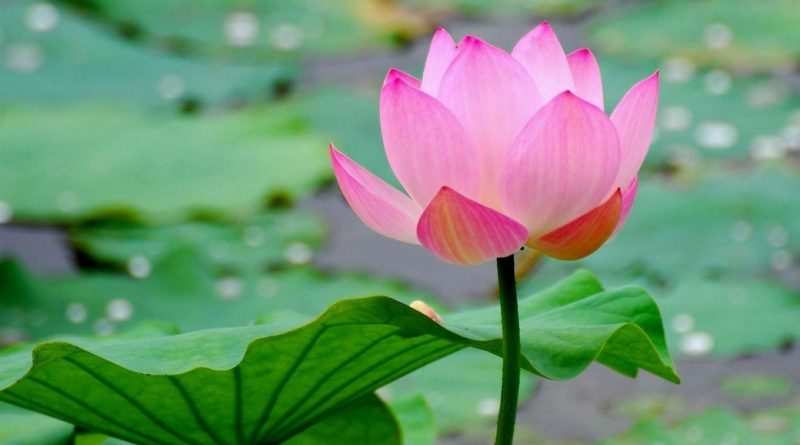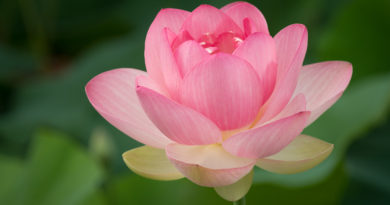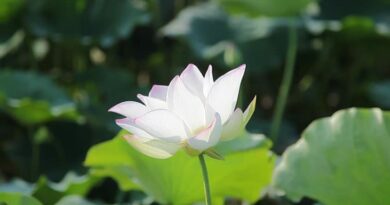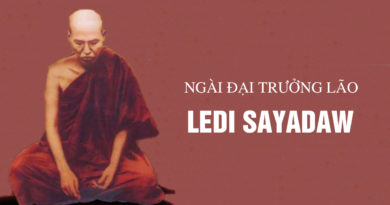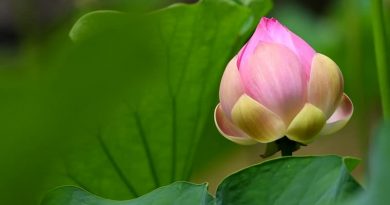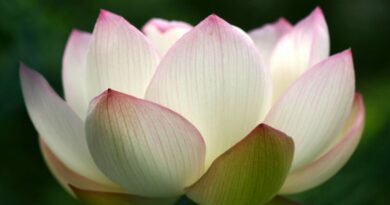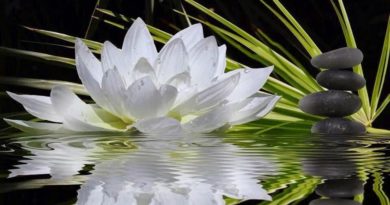SASANA ABROAD – SAN JOSE TO CHICAGO
MAIN CONTENT
SASANA ABROAD
SAN JOSE TO CHICAGO
On July 28th Sayadaw and Dr. U Mya Aung left San Fransico Airport at 2:40 p.m for Chicago and arrived there at 5:40 p.m. Sayadaw U Kesava (Myanmar Monastery), U Vijaya, U Dhammapiya, Daw May Kyi Win and other devotees met Sayadaw at the Chicago airport.
It was learnt that meditation retreat had never been conducted at the Chicago Myanma Monastery before. The success of the Chicago retreat was due to the ardent organisation of Daw May Kyi Win and her associates and the donors of the monastery.
Chicago Myanmar Monastery Retreat Programme
July 28th-29th”, 7—9, Evening, Dhamma Courses
July 30th,
Morning,
8—10: Instruction on Meditation, Practice and meditation
Evening Time
1—2: The rejoiceful dhamma on Alms food dana
2—3: Sitting Practice
3—4: Reporting
4—5: Sitting Practice
5—6: Walking Practice
7—8: Sitting Practice
8—9: Dhamma Talk
July 31st, Morning , 8 —10: Meditation
This very life, a noble one
On July 29th” from 8:00 p.m to 9:30 p.m. the dhamma discourse about “The Four Conditions hard to attain” was delivered to a group of about twenty-five to thirty devotees, including two Americans. At the end of the dhamma discourse, some of the listeners respectfully informed Sayadaw that it was a beneficial one.
The title of this evening dhamma talk is ‘This very life, a noble one.” According to the Anamatagga Sutta, this very life is the most noble one out of the incalculable past that you have lived. Why is it so?
In your uncountable past existences you may have lived in a hundred thousands years long life-span or thousand-thousands years long life span. So the long life-span is not the main factor for the most noble life. Is it the richness and wealth you have in this very life? In your un countable past existences you were many a time billionaire. So it is not the factor of wealth. Is it the power and influence you have now? In your uncountable past existences you may have been a more powerful monarch or the monarch of all the universes. Therefore it is not the factor of power. You have passed through many existences be tween now and then, consequently you are unable to remember that you have lived that long life, that you were so rich and that you have been so great and influential.
The reason why this very life is the most noble one, is because in this very life you can listen to the noble dhamma which closes the door to apaya and enables you to realize nibbana. This is so, because you have the four conditions which are hard to achieve. The dhamma on these four conditions was preached by the Buddha at one time on the way to the Sanga River, under one of the seven big rain trees in connection with Erakapatta dragon.
The four conditions are:
(1) To be a human being
(2) To be alive
(3) To listen to the noble dhamma
(4) To be in the presence of the Buddha’s Sasana.
The door to apaya will be closed, you will realise nibbana and gain the noble dhamma if you practise satipatthana vipassana meditation under the right guidance. Since you have these four condition thereupon the present life that you are living is the most noble one. The Buddha preached the Nakhasika Sutta (Earth dust on the Buddha’s thumb nail) to explain how it is difficult to be a human being.
Once Buddha was residing at the Jetavana monastery, Savatthi. One day the congregation of monks and the devotees were waiting to listen to the dhamma talk and as there was no time for a dhamma talk, the Buddha put some earth dust on His thumb nail and asked, “Oh, monks, what would you say comparing the earth dust on My thumb nail and that of the Earth, which is greater?” “Your most Ven. Sir, the amount of earth dust on the nail is much too little compared to that of the Earth which is much too much”, replied the monks. Thereupon the Exalted One pointed out, “My good sons, the chance to be a human being can be compared to the earth dust on my nail. The number of people reborn as human beings after passing away from the human world can also be comparable to the dust on the nail. On the other hand, the number of people reborn in apaya after passing away from the human world is comparable to the amount of dust on the Earth.” Thus the Buddha made it vivid how difficult it is to attain human life. Now the audience of this dhamma talk have learnt how difficult it is for one to be a human being. Accordingly, you should strive earnestly to practise satipatthana meditation. The most Venerable Mahasi Sayadaw composed the following mottos to exhort the dhamma listeners and the future generation.
Motto: Although itis difficult to be a human being, now you are a man living.
As there was not enough time to deliver a dhamma discourse, the Buddha continued, “You have gained a human life which is very difficult to attain. The chance to be a human being is as little as the earth dust on the nail. Since you are now in the presence of My Sasana, you should not forget’, ‘you should not forget’, ‘Practise ardently.’ Does the statement ‘you should not forget’ means that the Buddha was reminding us not to forget to enjoy the pleasurable life of man, devas and brahmas, after performing sila, dana and samatha? No, your Ven. Sir, Lord Buddha, in fact, meant to remind the dhamma listeners as well as all beings, beginning from this very life, not to forget to practise Satipatthana vipassana which closes the door to apaya, liberates one from all sufferings of existences and provides the bliss of nibbana.
The reason why this simple statement ‘Should not forget’ is interpreted as to remind the dhamma listeners and all beings not to forget to practise satipatthana vipassana which sets them free from the sufferings of existences and leads to the happiness of nibbana is: That the Buddhawouldbe underwent four incalculables and a hundred thousand worlds to complete the perfections of parami (purification) without regard for his body and life. This sacrifice does not aim for the dhamma listeners and all beings to enjoy the sensual pleasures of men, devas and brahmas.
Thus, the one and only aim of this great sacrifice in His completion of purification during the four incalculables and a hundred thousand worlds, with no regard for his body and life is, beginning from this very life, to liberate the dhamma listeners and all beings from apaya, to set them free from all sufferings of existences and to take them to nibbana. Accordingly the listeners of dhamma are now practising satipatthana vipassana whenever time is available.
During His life-time, the Buddha’s wish for all beings was not only to become a sotapanna, a sakadagami, or an anagam but to become an arahant. As there were more people with mature parami, in the Buddha’s lifetime, many aspired and strove for the attainment of arahatship. How ever, nowadays in the later part of Sasana, there are less people with mature parami and there may be few who aspire for arahatship. Anyhow, there are aspirants at least for sotapanna. While living as a man in the presence of Buddha sasana, should you not practise at least to be a sotapanna by attaining the insight which can close the door to apaya? (Yes, Your Ven. Sir, we should).
Our Benefactor Mahasi Sayadaw, Vebu Sayadaw, Toung-pu-lu Sayadaw and many such compassionate Sayadaws exhort their close devotees, ‘Practise, practise vipassana while you are in the (Buddha’s) sasana, at least to be a sotapanna who is free from the sufferings of apaya and to whom the door to apaya is closed”. The great Sayadaws’ admonishments mean that it is possible to be a sotapanna in these days. You are, accord ingly practising at present. Our benefactor Mahasi Sayadaw gently advised us with the following motto.
Motto: Should attain the stage of nana
with chances to be free from apaya.
Lord Buddha frequently exhorted not to miss the golden opportunity of the sasana and to practise to attain, at least, the stage of nana which closes the door to apaya “If you fail to seize this golden opportunity and do not practise dhamma, the consequences are that whoever misses the sasana will be reborn in apaya, and repeatddly suffer anxieties and miseries.” Thus the Buddha advised with great compassion.
Sadhu! Sadhu! Sadhu!
Not to suffer as mentioned above, while living in the presence of Sasana, everyone should exert to practise earnestly and intelligently. When there is an opportunity to be a sotapanna, a boat which can carry one to the other side of the samsara, nibbana, cessation of worries, every one should strive to attain that magga. This is the Buddha’s admonishment.
With his sublime wisdom the Buddha clearly knew how difficult it was for a man to be alive. The listener of dhamma will also realise it, if you think deeply. The Buddha preached that a man should do what he should do to-day, because he clearly perceived the fact that a man may be alive to-day, nevertheless it is not sure for tomorrow. Accordingly Mahasi Sayadaw composed the following motto:
Motto: It is difficult to be alive,
However, you are now alive.
In the Bhaddekaratta Sutta, the Exalted One has expounded that a man who was alive to-day may not be so tomorrow. Why? “Death” has ninety-six various diseases in our body as his internal armies; and knives, guns, poison and such are his external forces. We cannot bribe him to let us live one, two or three years, more, or one, two or three days longer. Moreover we cannot make friends with him nor recruit armies strong enough to defeat him. For these reasons though we live to-day, tomorrow is not sure for us. Consequently we must observe sila, practise samatha and vipassana right to-day. The Buddha said if you had a chance to practise vipassana which liberates you from apaya, do it right now. The following motto is composed by Mahasi Sayadaw
Motto: No appointment has been made,
Nor bribe can win best
Not enough force to face death.
Who knows that we will be still alive to morrow.
So postpone no more.
Practise now and ever more.
3. It is not an easy one to listen to the noble 5 vipassana dhamma instructed rightly how to practise to attain magga, phala and nibbana. The dhamma listeners have heard the various dhamma on dana, sila and samatha without difficulties. Even in the absence of sasana you can listen to such dhamma. The reason why you do not remember them is because you have gone through many existences between now and then. The satipatthana vipassana dhammas were not heard in the absence of sasana since there was no one to preach it. Even in the presence of sasana a few years ago, people were quite satisfied with dhamma on dana, sila and samatha as it was the time for dana, sila and samatha. People were also elated with the titles such as donors of pagodas, and monasteries. At that time, it was difficult to listen to satipatthana vipassana dhamma as the great sayadaws and samghas were more concerned with the conduct (sila) and contented with the purity of sila. However, they did not preach the dhamma on Satipatthana vipassana. The devotees revered them too for their purity in sila. As it is the opportune time for the satipatthana vipassana, you all can listen to the dhamma on satipatthana vipassana. On the other hand, for those who have no basic purification (parami), it is hard for them to listen to satipatthana vipassana dhamma even in the presence of Sasana. Mahasi Sayadaw has composed the following motto.
Motto: It is difficult to listen to the noble dhamma
However, you are listening to it.
4. It is also difficult to be in the presence of the Sasana which exists only when there is enlightenment of Buddha. To be an Enlightened One, the would -be-Buddha has to undergo four incalculable and a hundred thousand worlds, eight incalculable and a hundred thousand worlds, or sixteen incalculable and a hundred thousands Worlds, with no regard for his body and life in order to fulfil the parami. The number of worlds without an enlightened Buddha is far greater, in comparison with that of the worlds where there is an enlightened Buddha. That is the reason why it is hard to be in the presence of Sasana. You exist in the presence of Sasana since you have fulfilled, to a certain extent, the special parami in your numerous past existences. Accordingly, should you not strive, at least to be a Sotapanna which saves you from apaya? (Your Ven. Sir, We should)
Motto: Though it is difficult to exist in Sasana
you are now living in the presence of Sasana. (Mahasi).
It is also difficult to be complete with the already discussed four conditions.
(a) To be a human being though it is very difficult to be so
(b) To be alive though it is difficult to be so
(c) To be able to listen to the Satipatthana vipassana dhamma which liberates one from apaya, in this very life.
(d) To be in the presence of the Sasana, though it is to be so difficult.
It is not possible to be complete with these four conditions even if you have lived many incalculable existences. However, you have this opportunity in this very life because of your special kusala and parami.
Motto: It is difficult to be complete with the four conditions.
However, you now have them. (Mahasi)
Lord Buddha expounded this dhamma on the four conditions to make people realise that they can achieve the noble magga by practising vipassana dhamma under the correct guidance, if these four conditions are complete for them. The Benefactor Mahasi Sayadaw has accordingly composed the motto to exhort the devotees and the coming generation to practise vipassana in order to become, at least, an apaya-door closing Sotapanna.
Motto: The noble magga should be realized
when the four conditions coincide.
I believe that you are now quite sure that in this present existence you can gain the noble dhamma, you can prevent apaya and attain nibbana Are you sure? (Yes, your Ven. Sir). If it is so, you need to practise the correct Satipatthana vipassana. I will give you a brief account of how to practise Satipatthana vipassana correctly. Here are three types of practice.
(1) Sitting practice
(2) Walking practice, and
(3) Noting the general bodily actions
(1) Sitting Practice
According to the most Benefactor Mahasi Sayadaw’s instruction, a meditator should choose a quiet place and take a posture which will enable him to sit long; he can sit cross-legged or with his knees bent under him. He must close his eyes, hold up his head and straighten his back. His mind should penetratingly fix on the abdomen. When the abdomen rises gradually due to inhalation, note ‘rising’ attentively from the beginning to the end without letting the mind wander off. While contemplating so, ignore the form of the abdomen and note attentively the nature of the stiffness and the pushing from inside. The abdomen which is pannatti is not to be contemplated. The nature of pushing and stiffness is paramattha which is to be observed.
When the abdomen falls gradually due to exhaling, note ‘falling’ attentively from the beginning to the end, without the mind wandering. In noting ‘falling’ leave alone the form of the abdomen but note the nature of gradual downward movement in the abdomen. The abdomen is pannatti which is not to be observed; the nature of downward movement is paramattha, therefore, it is to be noted.
If the noting of ‘rising’ ‘falling’ is not effective, then add one more noting ‘touching’. Disregard the form of the body as much as possible, but attentively note the hardness or heat caused with touch of the bottom with the floor or clothes. If the noting of three points fail to keep the mind from wandering then note ‘rising’, ‘falling’, ‘sitting’, ‘touching’. Do not note the shape of the head, body, hands or legs at all. However, try to visualize, as much as possible that the body is erect and taunt due to the force or intention to sit. The noting of four points such as ‘rising’, ‘falling’, ‘sitting’, ‘touching’, should calm the mind.
When the mind no longer wanders by noting ‘rising’ ‘falling’, keep on noting these two points. Similarly, if the three points noting can hold the mind, continue noting ‘rising’, ‘falling’, touching, Likewise note the four points. Such as rising’, ‘falling’, ‘sitting’, touching if the concentration develops by noting so. In vipassana meditation, it is to note the paramattha the nature, penetratingly and to disregard the pannatti, the form or shape, as much as possible. Then only, concentration will be swiftly improved and one will quickly gain the dhamma. Moreover, it is also important to note at the present precisely and penetratively. These are the two major factors in vipassana meditation.
How to differentiate pannati and paramattha? Things or objects that can be seen by the natural eyes or can be felt or touched are pannatti. Paramattha is the phenomenon which cannot be seen by the natural eyes nor be felt nor touched, but it is the phenomenon, which can be comprehended by consciousness, such as the sensation of coolness sensing the hardness, softness, pushing, tightness and stiffness, movement, cohesion seeping, pain, numbness, etc. It is not to pay attention to pannatti, but to observe attentively the paramattha, the nature, as much as possible.
Motto: Disregard pannatti and attentively observe paramatta.
Dhamma can be gained only when the observation is focused precisely at the present as much as possible. Nama and rupa in the dhamma listeners, manifest only at the present. If the observation misses them by a second or a hair width they no longer exist, therefore there is nothing to observe. In other words, you are noting what is not present and so no dhamma is gained. As the nama and rupa manifest, only at the present, the Buddha explained how to note them precisely at the present. The listeners of dhamma cannot perceive nama and rupa before they manifest because they are not present then in the continuity of your body. After manifestation they immediately disappear and can be found nowhere in the continuity of your body. They exist only at the precise moment of manifestation or at the present.
The manifestation of nama and rupa is analogous to a flash of lightning in the sky. Due to the collision of two clouds, there is a flashy of lightning which appears and disappears instantly. It is no longer in the cloud after its disappearance nor before its appearance. In the same manner, nama and rupa are not present in the continuity of the body, before their manifestation. They are not left in the continuity of body after their disappearance, they exist only at the precise moment of manifestation. That is the reason why the Buddha advised you to note precisely at the present. The past nama and rupa no longer exist; so also the future nama and rupa are not yet manifested in your body as they have not appeared. Lord Buddha preached, in the Bhaddekaratta Sutta, to observe the present nama and rupa, but not the past nor the future ones as they could not be observed. Our late Benefactor Mahasi Sayadaw had composed the following motto.
Motto: Do not recollect the past, or think of the future.
Observe the present manifesting nama and rupa without fail.
(2) Walking Practice
In the walking practice also, it is to observe paramattha penetratingly and to focus at the present precisely. Thereupon the nature of dhamma will be perceived on and on. While noting ‘lifting’, dissociate your mind from the form of the leg, as it is pannatti. However observe the gradual upward movement as it is paramattha. It is also important to note the process of movement precisely at the present. Moreover, the yogi will notice lightness in the gradual upward movement of the leg, when he is successful in ignoring the form, pannatti, in comprehending the nature of the movement and in observing the process of movement precisely at the present. Similarly, while noting ‘pushing’, the yogi will be able to dissociate his mind from the form, to comprehend the nature of the forward movement and to observe precisely the process of movement at the present. Furthermore he is aware of lightness in the forward pushing movement. Lightness in the lifting and forward pushing movements are brought about by tejo (element of heat) and vayo, (element of motion).
Motto: In tejo and vayo the two elements,
lightness is apparent.
While noting ‘dropping’, the yogi will notice not only the gradual downward or dropping movement but also the sense of heaviness in it if he can disregard the form of the leg, if he can comprehend the nature of the downward movement and if he can observe precisely the process of that movement at the present. Heaviness is the indication of the presence of pathavi, (the element of extension) and apo, (the element of cohesion)
Motto: In pathavi and apo the two elements
Heaviness is apparent
(3.) Noting general bodily actions.
It is not the time for sitting practice nor for walking practice. At the hostel, while performing the daily activities the yogi need to be mindful of the distinct one out of the four postures. After listening to the dhamma talk or after the sitting practice do not get up in a hurry. Just observe your mind and you will find vividly the intention to stand up occurs first, then note “intend to stand up, intend to stand up.” Note “standing up standing up” when the actual standing up movement takes place. In doing so pay no attention to the forms of the head, body, hands and legs, however observe penetratingly the gradual upward movement.
The yogi will comprehend personally that he has attained two stages of insight by noting the intention to get up. The intention to get up is the conscious mind. Is it rupa or nama? (It is nama, Your Ven. Sir.). Yes, the bodily movement in getting up is unconscious matter, therefore is it rupa or nama (It is rupa, Your Ven: Sir) The Namarupa pariccheda Nana is attained when the yogi can differentiate between nama and rupa: The yogi stands up because of the intention to stand up. Is the intention to stand up the cause or the effect? (It is the cause, your Ven: Sir) Is the bodily movement in standing up the cause or effect? (It is the effect, Your Ven: Sir). This knowledge of cause and effect indicates the attainment of Paccaya-pariggaha Nana.
Motto: The intention to stand up is nama,
standing up, action is rupa.
It is not ‘I’ or ‘you’ who stand up
Just nama and rupa that stand up
When the pair is lucidly perceived,
The purpose of standing up is achieved.
After standing up to walk, do not take the next step hurriedly. Observe the mind carefully. Thereupon you will find clearly that the intention to walk appears first. Then note “intend to walk”, “intend to walk”. When the actual walking movement takes place, then note, ‘walking’, ‘walking’, ‘left foot for ward’, ‘right foot forward’ and so on. Without noting the form of the head, body, arms and legs, observe attentively the gradual forward movement The yogi gains two stages of insight by observing the intention to walk, through personal experience. The intention to walk is the conscious mind, therefore is it nama or rupa? (It is nama, Your Ven. Sir.) Yes it is nama. The walking behaviour is the unconscious matter, so is it nama or rupa? (It is rupa, Your Ven. Sir) Yes it is rupa. The Namarupapariccheda Nana is achieved when the yogi thus differentiates nama and rupa.
The yogi walks because of the intention to walk. Is the intention to walk the cause or the effect? (It is the cause Your Ven. Sir). Is the walking behaviour the cause or the effect? (It is the effect, Your Ven. Sir). Yes it is the effect. Thereupon the Paccaya-pariggaha Nana is attained due to the knowledge of cause and effect.
Motto: The intention to walk is nama, the walking action is rupa.
It is not ‘I’ or ‘you’ who walks
Just nama and rupa that walk.
When the pair is lucidly perceived,
The purpose of walking is achieved.
The yogi wants to stop after walking. If he is mindful he will be aware that the intention to stand arises first, one, two or three steps before stopping, note then, ‘intending to stop’, ‘intending to stop’. When the yogi actually stops, then note ‘standing’ ‘standing’. While thus noting, disregard the form of the head, body, legs and arms and be as mindful as possible of the nature of tautness, due to the pushing force of the intention to stand. The yogi gains two stages of insight by observing the intention to stand through personal experience. The intention to stand is the conscious mind therefore, is it nama or rupa? (It is nama, Your Ven. Sir). Yes, it is nama. The ending behaviour is unconscious matter, so is it nama or rupa? (It is rupa, Your Ven. Sir) Yes, it is rupa. Then the Namarupapariccheda Nana is achieved, as the yogi can differentiate nama and rupa.
The yogi stands because of the intention to stand. Is the intention to stand the cause or effect? (It is the cause, Your Ven. Sir). Is the standing behaviour the cause or the effect? (It is the effect, Your Ven. Sir). Yes it is the effect. By dint of the knowledge of cause and effect the Paccayapariggaha Nana is attained.
Motto: The intention to stand is nama, the standing behaviour is rupa.
It is not ‘I’ or ‘you’ who stands
Just nama and rupa that stand
When the pair is lucidly perceived
The purpose of standing is achieved.
When the yogi is about to sit, he should not sit immediately. If he is specially mindful he will notice that the intention to sit occurs first. Then note ‘intending to sit’, ‘intending to sit’. When the sitting action actually takes place then note ‘sitting, ‘sitting’. It is not to pay heed to the form of the head, body, legs and arms. However, it is to observe attentively and to comprehend, the gradual downward movement, step by step. The yogis know for themselves, by virtue of noting the intention to sit the first two stages of insight. Since the intention to sit is the conscious mind, is it nama or rupa? (It is nama, Your Ven. Sir). Yes, it is nama, The sitting behaviour is the unconscious matter; is it nama or rupa? (It is rupa, Your Ven. Sir). Yes, it is rupa. This knowledge of distinction between nama and rupa is the Namarupa parriccheda Nana.
Because of the intention to sit, sitting takes place. Is the intention to sit the cause or effect? (It is the cause, Your Ven. Sir). Yes, it is the cause. Is the sitting behaviour the cause or effect? (It is the effect, Your Ven. Sir). Yes, it is the effect. Thus the Paccaya-pariggaha Nana is achieved when the cause and effect are differentiated.
Motto: The intention to sit is nama, the sitting
behaviour is rupa.
It is not ‘I’ or ‘you’ who sits.
Just nama and rupa that sit.
When the pair is lucidly perceived
The purpose of sitting is achieved.
When the yogi is about to lie down from the sitting position, do not lie down immediately. If he attentively observes his mind he will find that the intention to lie down appears first. Then note, ‘intending to lie down’, ‘intending to lie down. Note ‘lying down’, ‘lying down’ when only the actual lying down movements occur. While noting thus, disregard the form of head, body, legs and arms; however penetratingly note the gradual lowering down movement as march as possible. In this way the yogi realises for himself that he has gained two stages of insight.
The intention to lie down is the conscious mind, so is it nama or rupa? (It is nama, Your Ven. Sir), Yes, the lying down behaviour is the unconscious matter, So is it nama or rupa? (It is rupa, Your Ven. Sir) Yes it is rupa. ,Thus the Namarupa pariccheda Nana is attained by the knowledge of differentiation between nama and rupa. The yogi lies down because of the intention to lie down Is the intention to lie own the cause or effect? (It is the cause, Your Ven. Sir). Yes it is the cause. Is the lying down behaviour the cause or effect? (It is the effect, Your Ven. Sir). Yes, it is the effect. Due to the ability to differentiate between the cause and effect Paccaya-parigaha Nana is attained
Motto: The intention to lie down is nama.
The lying down behaviour is rupa
It is not ‘I’ or ‘you’ who lies down
Just nama and rupa that lie down
When the pair is lucidly perceived
The purpose of lying down is achieved.
Contemplation on eating.
While taking food it is required to note the general actions. When you see your lunch, note ‘seeing, ‘seeing,’ When you stretch your hand to eat note ‘stretching’ ‘stretching’. When you touch it note ‘touching’, ‘touching’. When you prepare your food, note, preparing’, ‘preparing’. When you take it note taking’, ‘taking’. When you bend your head note ‘bending’ ‘bending’. When you open your mouth note ‘opening’, ‘opening’. When you put your meal into your mouth, note ‘putting’, ‘putting’. When you raise your head, note ‘raising’, ‘raising’. When you chew note ‘chewing’, ‘chewing’. When you know the taste note ‘knowing’, ‘knowing’. When you swallow, note ‘swallowing’, ‘swallowing’. This is what Mahasi Sayadaw has instructed how to be mindful while eating a mouthful of food.
At the beginning of contemplation you may not be able to note each and every action. You may be mostly unmindful; you must not be discouraged if this happens to you. You will be able to note almost all actions when your concentration becomes strong. When you begin to contemplate, note any prominent action. If stretching the hand is more distinct then note ‘stretching’ without fail. It bending your head is more prominent, note ‘bending’ When chewing is distinct note ‘chewing’ mindfully. Out of the two jaws (upper and lower), only the lower jaw moves while chewing food. This movement is observed as ‘chewing’, ‘chewing’.
In vipassana meditation it is not only to note the graceful bodily activities, but also the disgraceful ones are to be noted. When one is about to discharge excrement or urinate, the intention to discharge arises first. Then note, ‘in tending to discharge’ ‘intending to discharge’. Afterwards note ‘discharging’ ‘discharging’ when the actual discharging action happens. Meanwhile if you experience pain, ache, numbness and such, note them too. In this way, the vipassana merit is gained as noting during the excretion or urination is the contemplation of the phenomena (sampajanna)
Motto: Discharging excretion or urine with mindfulness is salnpajatifia.
The atthakatha masters remarked that who ever meditates continuously can gain magga in any of the activities. A certain person has a strong faith in the fact that during mediation the door to apaya will be closed, that nibbana can be realized and he is also meditating all the time. That person can gain magga and phala by noting walking’, ‘walking’ during the walking practice. He can gain magga and phala by observing ‘standing’, ‘standing’, during the standing practice. He can gain magga and phala by observing ‘sitting’, ‘sitting’, during the sitting practice. In the same way he can gain magga and phala by noting ‘lying down’ while lying down and by noting ‘biting’, ‘eating’ while eating fruits and sweet- meats. He can gain magga and phala by observing ‘eating’, ‘chewing’ while having his meal.
Motto: Noble dhamma is achieved by perfect observation
while walking, standing, sitting, lying down and eating.
The Sotapatti-magga-nana is firstly attained when the noting reaches the mark by successive observation. Later the Sotapatti-phala-nana is attained. The various demeritorious deeds one had performed during he incalculable past existences and the bad deeds which can take one to apaya are completely extinguished as soon as the Sotapatti-magganana is achieved. There is no more chance for these misdeeds to send one to apaya as the Sotapatti-magganana has entirely annihilated them. Moreover the demeritonous deeds one had done during childhood and youth in this very life and the misdeeds which can send one to apaya are also entirely extinguished by the Sotapatti-magganana. They no longer are effective in giving bad results such as to be reborn in apaya. For these reasons, when you have the four conditions which are hard to attain and when you have practised vipassana meditation under correct guidance, you will never be in apaya, as the door to apaya is closed for ever. Thereupon you are safe and sound and have no fear to undergo samsara (round of existence). Consequently you have no more doubt whether you will be reborn in apaya, or in the animal world, or in the peta world and such, after passing away from the present life. You are quite sure you will never be in these lower abodes. So also you undoubtedly believe that you will never be in the abode of the miserable disfigured demons (asurakaya) after this very life. While fearlessly undergoing the samsara, you will never be in the existences lower than the present life.
However, you will have nobler and higher existences relating to mentality, wealth and properties, noble heritage and better personality than the present existence.
Due to the noble and higher existence, though you forget to practise vipassana meditation, it will not be longer than seven existences. In the seventh life somehow or other you will become specially remorseful and attain arahatship after practising vipassana meditation. Although it is said that those yogis who have attained Sottapatti-magga nana and phala nana enjoyed life pleasures and happiness, rarely they enjoy the sensual pleasures such as good sight, good sense, good sound, good taste, good touch. Then in what ways do they enjoy life? They work and save for charity and give dana, observe sila, practise samatha meditation. In early days they could even enjoy jhanic absorption. They render services at the monasteries and meditation centres. If they enjoy life in this way and forget to practise vipassana meditation, it is not more than seven existences. In the seventh existence in one way or another they become very remorseful and practise vipassana meditation. Consequently, they become arahats. For these reasons this very life is said to be a noble existence.
Since you have the four conditions which are difficult to attain, you can listen to-day to the noble dhamma .’Noble is this very life’. After listening to this dhamma, may you be able to practise accordingly. May you immediately attain the noble dhamma namely, Nibbana, the cessation of all sufferings and your most aspired goal, with easy practice.
Sadhu! Sadhu! Sadhu!
The listeners of the sermon on ‘Noble is this very life’ respectfully informed Sayadaw that they were so much impressed and pleased with the dhamma, that they developed piti and some even shed piti-tears

